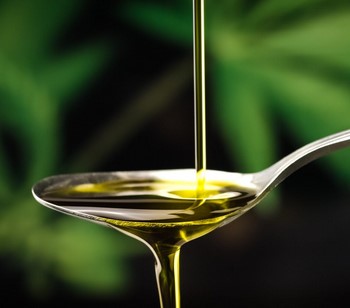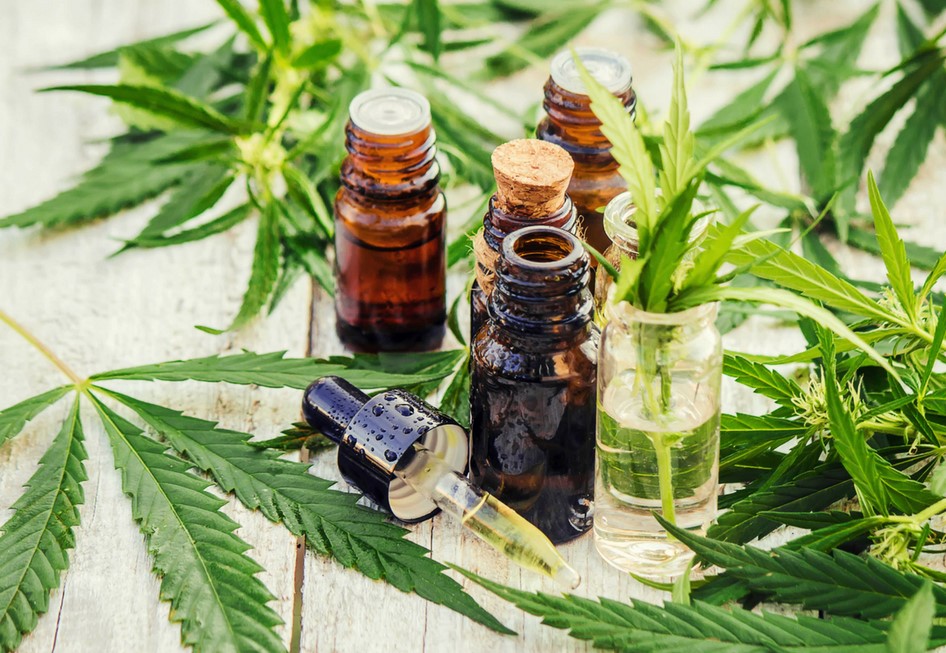Cannabis tinctures were once as common as aspirin. Prior to 1937, rather than taking a pain-relieving pill, many people used a cannabis tincture to alleviate daily pain and discomfort. Now legal in 24 states, patients are once again finding tinctures to be a portable, discreet and effective way to relieve pain.
Glycerin cannabis tincture is a potent extract that many cannabis connoisseurs enjoy. In a previous story, we discussed how to make glycerin marijuana tincture. Since that story was posted in 2014,
As we near the end of 2018 and cannabis becomes more universally accepted, people are varying the way in which they consume their cannabis. And one of those methods of consumption that’s increasingly growing in popularity is glycerin cannabis tincture.
Nowadays, most people who use cannabis tincture administer it as a sublingual under the tongue or in the cheek. It’s absorbed directly through mucus membranes and effects can be felt within 5–10 minutes. The outcome usually peaks within an hour and recedes in two to three hours.
Cannabis tincture can also be administered through the mucus membranes of the vagina and the anus to achieve a powerful aphrodisiac effect. The effects are also felt within 5–10 minutes, but are much different than other cannabis experiences because they center on the pelvic region.
Easily ingested orally, much like a medible, glycerin cannabis tincture passes through your digestive system, then into the liver, where its Delta-9-THC — i.e., the primary active component of cannabis — is converted into the main active metabolite of THC, called 11-hydroxy-THC, before it enters the bloodstream. This conversion creates a different high than what you get from inhaled cannabis.
Again, as with consuming edibles, liver-processed cannabinoid effects come on slowly, tend to be more body centered, are longer-lasting compared to inhaling cannabis or using tincture sublingually, and are much more difficult to titrate.
What Outcome To Expect From Glycerin Cannabis Tincture
Cannabis affects each of us differently, and when you’re ingesting glycerin tincture, those idiosyncratic effects are magnified and must be carefully monitored and adjusted to suit your needs and desires.
With my own personal glycerin tincture recipe, I need only take four or five drops under the tongue, as compared to commercial glycerin tinctures from dispensaries that recommend as much as 30 drops. Indeed, the tincture I make is way stronger.

Taking a small number of drops isn’t always logistically easy, because glycerin is very thick and hard to hold via suction in an eyedropper. When I’m providing glycerin tincture to someone else, I do the extraction as per my recipe, but then add glycerin to dilute the dose, so it’s easier for them to use a spoon rather than an eyedropper.
Some people may wonder why I don’t just use fewer buds at the outset to decrease the strength of the tincture. I prefer to make a very concentrated tincture, test its potency, and dilute if it’s too strong. If I use fewer buds and create a weak tincture, there’s really no good way to increase its potency.
Like all heat-based extractions, long-term decarboxylation changes raw forms of cannabis compounds, including THC and CBD, in ways that promote a body high rather than a head high. The mode of absorption for glycerin cannabis tincture (via mucus membranes that transfers cannabinoids into the bloodstream, or via oral edible ingestion) also tends toward a heavy, body-centered high.
Even when I make a tincture with pure sativa buds heated to 275°F instead of 300°F and extracted for only two hours instead of 12–20 hours, the tincture high is heavy, but somewhat more uplifting than what I’ve got from previous homemade batches.
For this reason, I see glycerin tincture as a useful medical marijuana product that’s effective at ridding the body of chronic pain, anxiety, insomnia, spasms, arthritis and similar maladies. When I’m having a hard time getting to sleep, a drop or two of tincture gives me sweet dreams within 15 minutes, whereas if I want a stimulating, active high, I rely on inhaled cannabis.
Applied topically to a targeted area, cannabis tincture works as a muscle-relaxing analgesic and as an anti-inflammatory. However, it must be stated that of all the methods of cannabis consumption, topical administration, or transdermal transfer, is nowhere near as efficient as administration through the mucus membrane, or via inhalation or oral ingestion.
What is a Cannabis Tincture?
A cannabis tincture is simply alcohol or food-grade glycerin that has been infused with cannabis leaf trim and/or whole buds. After steeping and straining the plant matter from the alcohol or glycerin, you are left with a concentrated liquid medicine that can be taken sublingually or added to water, hot tea, etc. If the cannabis is heated before or after soaking, the plant’s THC-A will convert to THC and the tincture will provide euphoric, psychoactive effects. If the plant matter is not heated, THC will not be activated, but the tincture will still provide relief for many conditions including pain, nausea, spasms and seizures.
Alcohol-based Cannabis Tincture
The most common cannabis tinctures are alcohol-based. Although a grain alcohol such as Everclear is ideal, it’s perfectly fine to make your tincture with any high-proof alcohol.
Ingredients:
- 1 ounce of cannabis flower, trim or a combination
- 1 quart of high-proof alcohol
Materials:
- Device to grind the cannabis: coffee grinder, blender or food processor
- Cookie sheet
- Quart-sized glass mason jar with tight-fitting lid (or two pint-sized glass mason jars with tight-fitting lids)
- Bowl large enough to hold alcohol and cannabis
- Mesh strainer
- Cheesecloth
- Small funnel (optional)
- Dark colored glass dropper bottles (optional)
Instructions:
- Preheat oven to 240 degrees.
- Finely grind your cannabis in a coffee grinder, blender, or food processor.
- Spread the cannabis on a cookie sheet and bake for 20-30 minutes to activate the THC. Let cool.
- Add cannabis mixture to mason jar(s).
- Pour alcohol into mason jar(s) and stir.
- Tightly cover jar(s) and shake before setting in a cool, dark spot.
- The longer the cannabis-alcohol mixture steeps, the stronger it will get. Mixture should steep for a minimum of 4 hours though some people prefer to leave it for weeks or a month to increase potency. If leaving the mixture for longer than 4 hours, shake the jar(s) at least once a day.
- When you feel your tincture is potent enough, line a mesh strainer with cheesecloth. Place the lined strainer over a bowl big enough to hold the tincture. Slowly pour the alcohol and cannabis mixture through the cheesecloth. Gather, twist and squeeze the cheesecloth to release as much liquid as possible. Discard the plant material.
- Line the strainer with a fresh piece of cheesecloth and strain again, this time into the clean mason jar(s). Wring cheesecloth to release remaining liquid.
- Store your cannabis tincture in a cool, dark place.
- If desired, use a funnel to pour the tincture into dark glass dropper bottles for easy storage and dosing.
Glycerin Cannabis Tincture Recipe
While I’ve previously outlined a generic crockpot recipe for making glycerin tincture, I came to understand that the crockpot method was decarboxylating cannabinoids too much, resulting in a tincture that provided mostly body effects and had a very dark color.
I tried shortening the amount of time my cannabis and glycerin were heated in the crockpot, but most crockpots have only a high and low temperature setting, meaning I was unable to control the amount of heat delivered.
So, for this updated version of the recipe, I decided to use an oven, a stainless steel pot, an electronic infrared thermometer, and much shorter extraction times. After more than a dozen tincture-making sessions, I finally arrived at the following process for making glycerin cannabis tincture that meets my therapeutic needs.
Ingredients And Utensils
- 1 ounce high-quality dried, cured buds
- 3-quart stainless steel saucepan
- 32 ounces food-grade glycerin
- Infrared thermometer
- Stainless steel spoon
- Cheesecloth
- Mason jars
Method
- Preheat oven to 300°F.
- Trim an ounce of dried, cured buds. Place buds in a 3-quart stainless steel saucepan with no rubber on handles (it will melt), and cover the buds with 32 ounces of food-grade glycerin.
- Place lid on saucepan and put in your oven.
- Use infrared thermometer to measure surface temperature of your mixture every 20 minutes, ensuring stable 300°F temperature for three hours. Stir mixture with a stainless steel spoon before each temperature measurement.
- At the end of three hours, turn oven off and allow mixture to cool to room temperature (this can take an additioal 1–3 hours).
- Some tincture makers squeeze the tincture out of the buds using cheesecloth, but you can also leave the buds in the mixture, because as long as the buds stay covered with glycerin, they won’t mold and more cannabis compounds will be extracted out of them into the glycerin.
- Pour tincture into mason jars, seal the jars, and keep them in a climate-controlled environment, between 64–78°F. Consume the tincture within six months for maximum potency.
Glycerin-based Cannabis Tincture
For those of you who prefer a non-alcoholic option, replace the alcohol with food-based glycerin and follow the instructions above.
Non-THC Cannabis Tinctures
For those of you who prefer a non-psychoactive tincture, just omit steps 1 and 3 in the above recipe (don’t heat the cannabis) and follow the rest of the instructions. Non-THC cannabis tinctures can be made with either alcohol or glycerin, depending on your preference.
Potency and Dosage
The strain and quality of the cannabis used to make your tincture, combined with the length of time the tincture steeps, will determine the potency of your medicine. Use your best judgment as to proper dosage. If in doubt, start with a few drops, increasing as appropriate.

Thank You for all the info ! I’ve been making tincture for a few years, I started with veg, glycerin and a rock tumbler. Now I have different quicker ways but I Always like someone else take on things.
Hi there. I have a question. What amount would anyone suggest when using distillate instead of dry herb? Thanks.